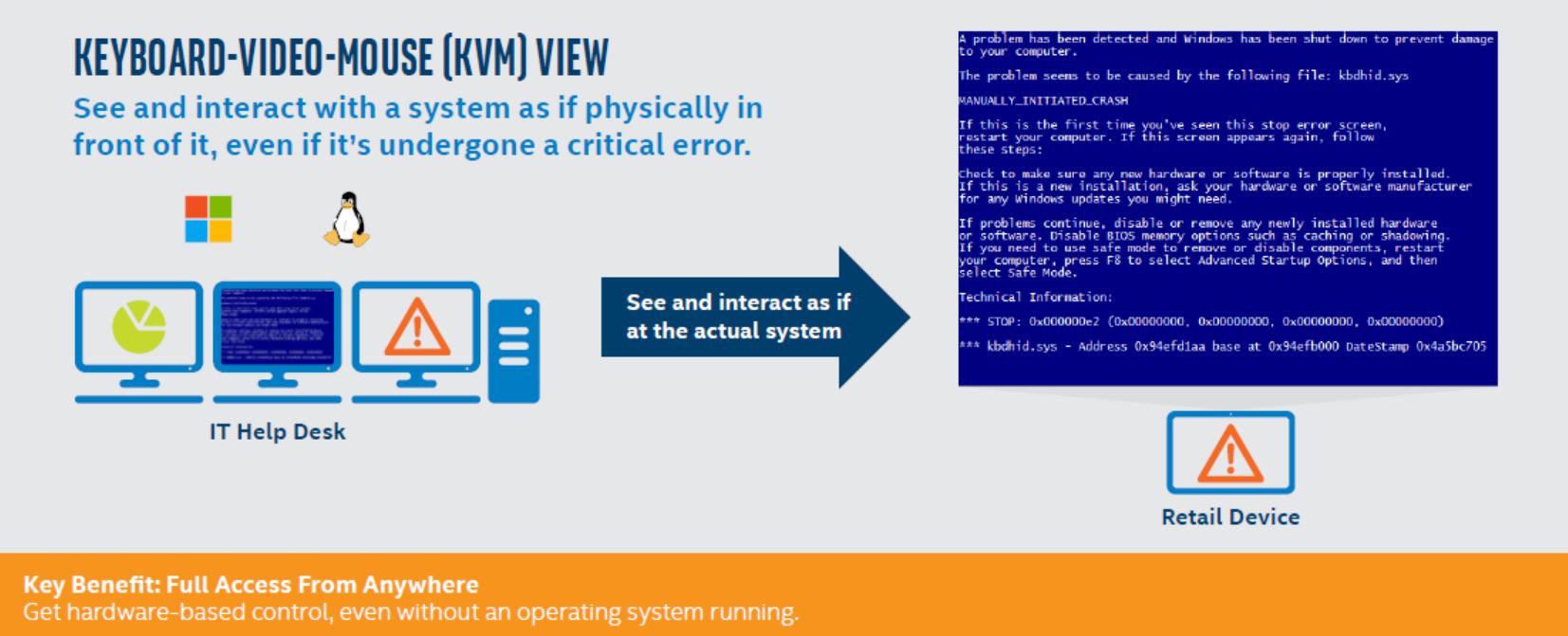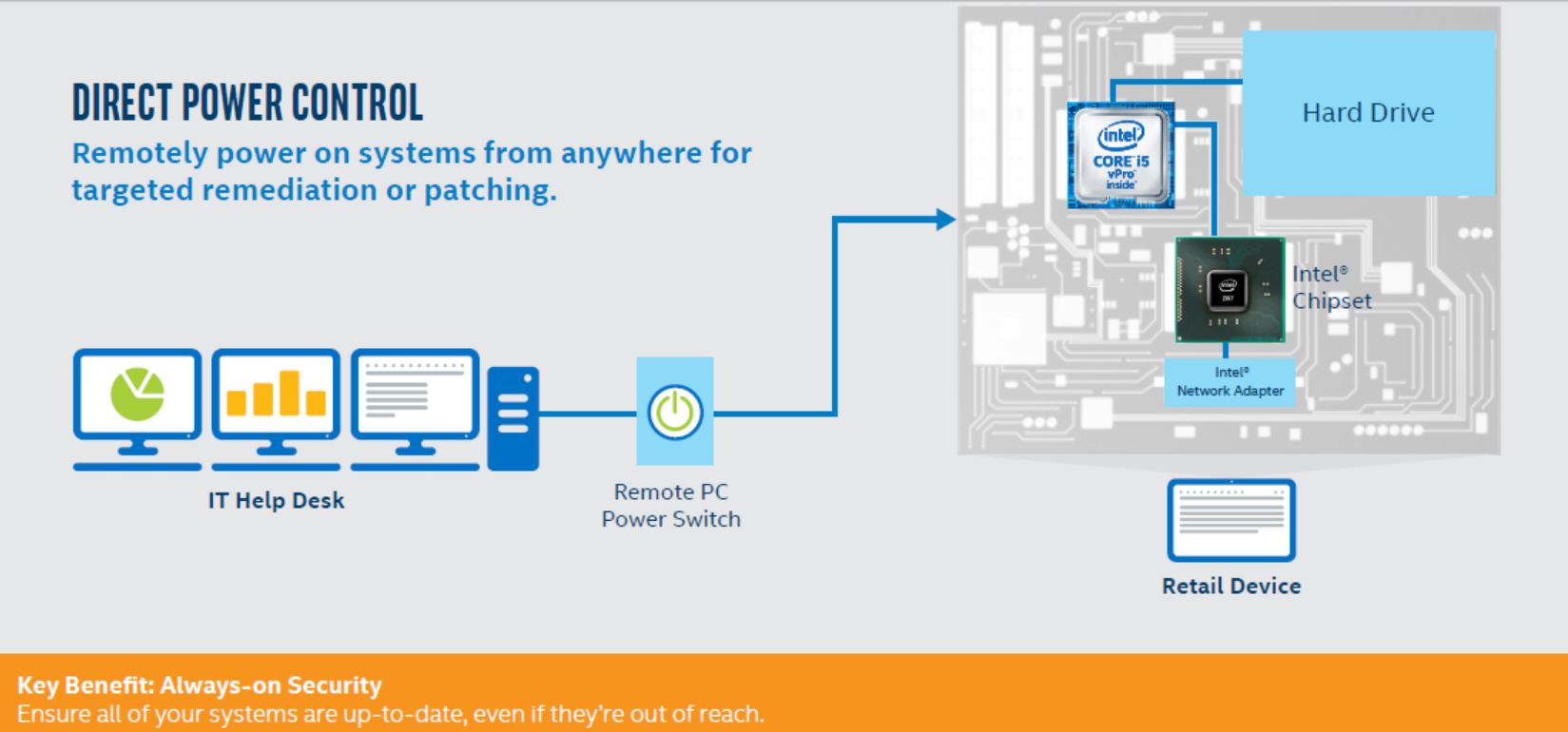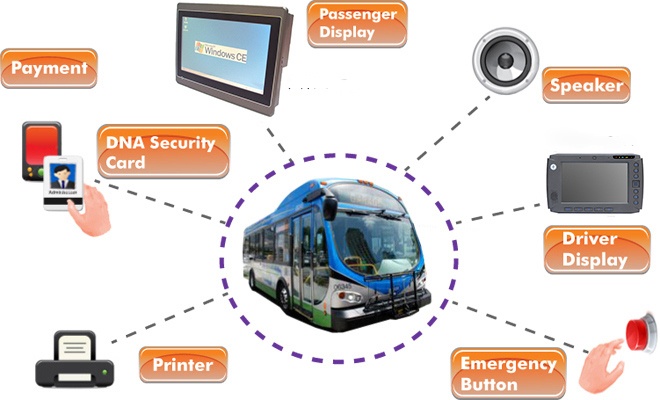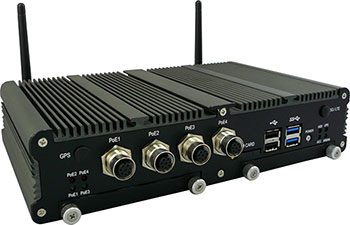The market for point-of-sale (POS) machines is extremely competitive, but POS machine designers can get an edge by appealing to two top retailer concerns: security and maintenance costs. Solve these problems for retailers and they are likely to line up to buy your money-saving solution.
How big of a problem are these two issues? According to Global IT service provider CompuCom, an IT visit can cost USD $187. A remote repair, on the other hand, costs just USD $12 – that’s 90 percent less expensive.
What about security? According to the Verizon 2015 Data Breach Investigations Report, the location of 70 percent of retail security breaches is the point of sale. This one remarkable fact shows just how vulnerable legacy POS machines are to identity thieves.
The first step to solving these issues for retailers is basing POS solutions on Intel® vPro™ platforms. Platform choices include the Intel® Core™ i5/i7 vPro™ processor family and the Intel® Xeon® processor E5-1600, E3-1500, and E3-1200 product families, as well as numerous Intel® chipsets and network adapters.
In cases where retailers are already using POS machines with these components, IT managers and managed service providers can activate the Intel vPro features in them. Intel® Setup and Configuration Software 9.0 makes implementing Intel vPro processor-based devices simple and fast. In a matter of minutes, many of the security and manageability features described here can be available.
Reducing Maintenance Costs
Intel® vPro™ technology and its remote device management component, Intel® Active Management Technology (Intel® AMT), easily and inexpensively integrate with existing IT environments and management infrastructure. Once activated, Intel vPro technology and Intel AMT work together to support the following management capabilities:
- Real-time access and full remote control over POS devices with integrated Keyboard-Video-Mouse (KVM) capabilities – even when operating systems or disk drives fail and the device won’t boot (Figure 1)
- Direct remote boots into the BIOS (via KVM support)
- Highly secure remote resets of forgotten disk encryption passphrases or PINs
- Remote system reimages and rebuilds
- Preboot eXecution Environment (PXE) support to boot devices remotely using their PXE-capable network interface controller (NIC)
- Remote shutdown and power-on to reduce energy consumption
- Provision of a temporary POS device to enable users to continue working while a device is repaired or reimaged

Figure 1. Intel® Active Management Technology (Intel® AMT) enables real-time access and full remote control over POS devices with integrated Keyboard-Video-Mouse (KVM) capabilities – even when operating systems or disk drives fail and the device won’t boot.
Improving Security at the Point of Sale
Any compromise of data generated at a retail POS is unacceptable – yet many retailers still rely on software-based authentication such as username and password. More than 50 percent of data breaches are caused by misused or stolen user credentials.
A retailer’s reputation can be lost right along with any customer identity information in a fraction of a second. Intel vPro technology helps protect against threats from hackers and identity thieves through exceptional, hardware-based security features. Its security takes a multilayered approach:
- Protection through hardware-based security access featuring the multifactor authentication of Intel® Authenticate Technology. In addition, Remote Secure Erase and Intel® Enterprise Digital Fence provide excellent data protection for Intel® Solid State Drives.
- Detection through security features such as BIOS Guard and OS Guard offering hardware-based device and platform protection against BIOS and malware attacks.
- Correction through remote out-of-band patching and recovery.
Use Case Examples
Intel vPro technology solutions are helping retail operations all over the world save on maintenance. The Bank of New Zealand, for instance, uses Intel vPro technology for their ATMs to power up devices for delivering patches, distributing software updates, and enforcing security policies. When an ATM experiences a system crash, the bank avoids a costly truck roll by running diagnostics and remediating issues via a remote hardware-based KVM session.
METRO Cash & Carry, an international leader in self-service wholesale, uses Intel vPro technology to remotely update POS machines even if a location is closed and machines are switched off (Figure 2). According to internal tests, METRO is saving the equivalent of several IT workdays per month by employing the remote manageability features offered by Intel Core vPro processors.

Figure 2. Intel® vPro™ technology enables remotely updating POS machines even if a location is closed and machines are switched off.
Architectural Considerations
Intel vPro technology platforms include features and capabilities to tightly integrate with complex infrastructure components such as Microsoft Active Directory*, DNS, DHCP, public key infrastructure (PKI), enterprise WLAN environments, and standard toolsets such as Microsoft System Center Configuration Manager and McAfee ePO Deep Command*. These infrastructure components are optional and depend upon IT requirements around security and investment in existing systems management products.
At the highest level, the recommended and most secure version of the solution architecture is comprised of the components shown in Figure 3 and Figure 4.

Figure 3. This diagram shows how to use Intel® vPro™ technology in a retail enterprise environment for the best results in terms of security and manageability.

Figure 4. This is a close-up of the Intel® vPro™ technology portion of Figure 3.
Putting Intel® vPro Technology on the Sales Floor
For over a decade now Intel has continuously improved the feature set of Intel vPro technology and the performance, stability, and reliability of Intel AMT. POS machine designers can choose from a wider variety than ever of embedded boards and POS systems offering Intel vPro technology, including new boards and systems featuring the latest 6th generation Intel® Core™ i5/i7 vPro processors. With advances in performance, productivity, data security, and identity protection, these processors provide Intel’s best solution yet for retail POS.
To provide a sample of what’s available from members of the Intel® Internet of Things Solutions Alliance, we chose a selection based on the mini-ITX form factor. Mini-ITX is a good choice because components are on a single board, all I/O is defined and integrated on the board in a standard manner with standard commercial connections, and the boards are competitively priced.
| Product | Intel® vPro™ Processors | Form Factor | Features |
| Avalue EMX-Q170 | 6th generation Intel® Core™ i7/i5 processor product family | Mini-ITX |
|
| Ennoconn NSB-3011 | Intel® Xeon® processors E3-1275 v5, E3-1268L v5, E5-1225 v5 | Mini-ITX |
|
| Fujitsu D3433-S | i7-6700 i7-6700TE i5-6500 i5-6500TE | Mini-ITX |
|
| iBASE MI990 | i7-6822EQ
i7-6820EQ i5-6442EQ i5-6440EQ |
Mini-ITX |
|
| IEI KINO-AQ170 | 6th generation Intel® Core™ i7/i5 processor product family | Mini-ITX |
|
| Jetway JNF594-Q170 | 6th generation Intel® Core™ i7/i5 processor product family | Mini-ITX |
|
| MSI MS-98B2 | I76600U | Mini-ITX |
|
| Portwell WADE-8017 | 6th generation Intel® Core™ i7/i5 processor product family | Mini-ITX |
|
Give Your POS Solutions the Intel® vPro™ Technology Advantage
Boost your sales by differentiating your POS systems using the manageability and security features that come by starting with a board offering Intel vPro technology. For a complete list of the hundreds of embedded systems and boards targeting the retail market and offering Intel vPro technology, see the Alliance’s Solutions Directory.


